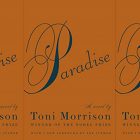Rachel Carson’s Toxic Inheritance

Rachel Carson begins her 1962 book, Silent Spring, with a parable. Titled “A Fable for Tomorrow,” the chapter describes a once vibrant town in America that has grown sickly and dying. Carson begins, “There once was a town in the heart of America where all life seemed to live in harmony with its surroundings. The town lay in the midst of a checkerboard of prosperous farms, with fields of grain and hillsides of orchards where, in spring, white clouds of bloom drifted above the green fields.” Carson’s town in the heart of America is described in the language of abundance and balance; even in the first sentence, however, Carson is skeptical of the town’s symbiotic relationship with nature, insisting that the town “seemed to live in harmony with its surroundings” (emphasis added). And, indeed, the fable takes a gothic turn when it is revealed that the land itself is hiding a secret that threatens this abundance: Carson writes of an “evil spell” cast over the town that sickens and kills the poultry and livestock. She then moves her attention to the inhabitants of the town, imagining a scenario where “children … would be stricken suddenly while at play and die within a few hours.” The illusion of harmony and abundance is quickly shattered when the mysterious illness enters into the domestic realm and threatens children and families.
Carson ends her fable by bringing the reader into the present tense: “I know of no community that has experienced all the misfortunes I describe. Yet every one of these disasters has actually happened somewhere, and many real communities have already suffered a substantial number of them.” Like ripples in a lake, Carson explodes her anxiety about pesticide use from a single, isolated, yet fictional, town to multiple American towns. Carson’s reality is far more frightening than her fiction because of the subtlety with which toxic problems are able to creep into communities and hide in plain sight.
Carson’s invocation of the idea of an American pastoral penetrated by a dangerous, toxic presence is, as Lawrence Buell in Writing for an Endangered World points out, neither new nor, in writings before Silent Spring, confined to ecological writings—or even American writings. Buell does, however, name the publication of Silent Spring as the effective beginning of “toxic discourse,” meaning a discourse that he defines as “expressed anxiety arising from perceived threat of environmental hazard due to chemical modification by human agency.” Silent Spring uses the power of toxic discourse to grab the attention of the reader, quickly turning products or experiences that were once wholesome or merely innocuous into potential contaminators or death-dealers.
Jane Smiley’s 1991 novel, A Thousand Acres, draws on Carson’s prescient use of toxic discourse. Set in 1979, the novel takes place on one thousand acres of fertile Iowa farmland. Frequently written about as a gendered retelling of Shakespeare’s King Lear, the novel tells the story of the Cook sisters, Ginny, Rose and Caroline, and what happens when their father, Larry Cook, chooses to give his daughters shares in the farm, thereby allowing them and their husbands to “run the show.” Similar to King Lear, issues of inheritance are dealt with early in the novel, and the major plot points revolve around the repercussions of Larry’s decision to divest himself of the day-to-day operations of the farms, as well as of Larry’s increasingly erratic behavior.
Embedded early on within the novel is another fable. Although this fable is ostensibly a history of the Cook family and how they came to own the thousand acres of farmland, it is also a fable of the myths and traditions of American hard work and individualism that Carson alludes to in her first chapter of Silent Spring. Ginny Cook begins:
My grandmother’s parents, Sam and Arabella Davis, were from the west of England, hilly country, and poor for farming. When they came the first time to Zebulon County, in the spring of 1890, and saw that half the land they had already bought, sight unseen, was under two feet of water part of the year and another quarter of it was spongy, they went back to Mason City and stayed there for the summer and the winter.
This origin story begins in 1890, the year the American frontier was declared officially closed, and contains all the elements of a classic American story of hard work and success. The first acres of the thousand-acre farm are in need of taming, and as Carson showed in her study, when nature is tamed it is only a matter of time before nature expresses its rebellion in violent ways.
In order to farm the land, a series of tiles are placed under the surface to drain the water and heat the soil, and over the course of years, the marshland becomes profitable farmland. As Ginny states at the end of her fable, “I was always aware, I think, of the water in the soil, the way it travels from particle to particle, molecules adhering, clustering, evaporating, heating, cooling, freezing, rising upward to the surface and fogging the cool air or sinking downward, dissolving this nutrient and that, quick in everything it does, endlessly working and flowing, a river sometimes, a lake sometimes.” Though Ginny is acutely aware of her relationship to the land and, particularly, to the transformative capabilities of the water that courses underneath it, what she has yet to recognize is how the water of the farmland affects and transforms her own body, making Ginny the conduit of a hidden toxicity that is the result of the tiles. Water in the novel is the element that ultimately brings the gothic to the Iowa farm.
Although Ginny does not realize how the well water from the farm is affecting her and her sister Rose’s bodies, she does recognize that women’s bodies have always served as conductors in her family—of property, history, and personal desires. Ginny describes how her grandfather, John Cook, came to be a part of the family, and also foreshadows her own marriage to her husband Ty: “It was pretty clear that John Cook had gained, through dint of sweat equity, a share in the Davis farm, and when Edith turned sixteen, John, thirty-three by then, married her.” As Ginny tells it, love is not part of the marriage equation, and land is transferred through marriage.
Smiley expands on Carson’s strategic use of the family when she chooses to focus the toxic discourse of the novel on women’s bodies. More specifically, by putting women’s bodies at risk of toxic contamination, Smiley puts the family itself at risk. Because of the contaminated well water, Ginny is unable to have children, and her sister Rose dies of breast cancer, leaving her two daughters without a mother or a father, their father having drowned earlier in the novel. By positioning women’s bodies as repositories and conduits of technological and familial toxicity (both Ginny and Rose are survivors of sexual abuse at the hand of their father), Smiley also employs the trope of the family to explore the reality of the destructiveness of toxic poisoning. Ultimately, the toxicity of the farm—or “nature’s rebellion,” as Carson called it—wins out, and the thousand acres leave the Cook’s possession. The Cook family, in all its permutations, is divided and driven off their land by the toxic contaminants bubbling to the surface.
Though Ginny does become a mother to Rose’s children, and does construct a new identity for herself that is not rooted in the Iowa landscape, she must do so away from the farm. The toxicity of the thousand acres excludes her not only from biological motherhood but also from land inheritance and property ownership. The literal toxicity presented in the novel comes to represent an American tradition that has itself become toxic and exclusionary: hard-work, individualism, and rebirth are possible for Ginny, though not as an owner of or participant in the American landscape. Smiley ends the novel with Ginny reflecting on inheritance from the farm, using an echo of Carson’s own language. As Ginny says:
My inheritance is with me, sitting in my chair. Lodged in my every cell, along with DNA, are molecules of topsoil and atrazine and paraquat and anhydrous ammonia and diesel fuel and plant dust, and also molecules of memory…. All of it is present now, here; each particle weighs some fraction of the hundred and thirty-six pounds that attaches me to the earth, perhaps as much as the print weighs in other sorts of histories.
Ginny recognizes that the toxicity of the thousand acres are within her; the toxicity is her personal history. And Ginny’s recognition of the poison her body carries brings the past into contact with the present.
Though some of the toxicity of A Thousand Acres is figurative, most is literal, and it is the literal toxicity that keeps the novel in the present tense, propelling the characters, particularly Ginny, to unearth buried memories, reconcile with them, and move into the future. That is also the power of Silent Spring. Carson is unrelenting in maintaining that the poisoning of the landscape is a problem of the here and now, not one that can be relegated to the past or dealt with by others in the future. The toxic discourse that Silent Spring instigated is therefore capable of not only connecting but also overlapping the past with the present.
This piece was originally published on October 8, 2019.



